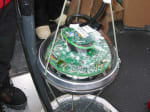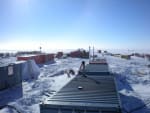The on-line version of Symmetry Magazine features the completion of the construction of the IceCube neutrino telescope. […]
Earthquake devastates Christchurch, New Zealand
On February 21st at 12:51 PM New Zealand time, a 6.3 magnitude earthquake (USGS Earthquake Report) ripped through Christchurch, New Zealand resulting in more than 60 deaths and around $6 billion dollars (USD) in damage.
The IceCube collaboration sends its best wishes to the residents of Christchurch and our collaborators at the University of Canterbury.
Nearly 90 percent of the U.S. Antarctic Program (USAP) personnel believed to be in transit from Antarctica or on vacation in New Zealand at the time of the earthquake have been accounted for.
For updates, visit the USAP website […]
The Polar Particle Hunter
IceCube Collaboration member Spencer Klein reflects on the final string of the South Pole detector. […]
Antarctic Neutrino Hunt
The World’s Coldest Physics lab
An article on the Quantum of Knowledge blog details IceCube”s scale and purpose and outlines the importance of the neutrino as an astronomical messenger. […]
Underground Physics Lab
An audio interview with IceCube Collaborator and University of Alberta faculty Darren Grant. […]
South Pole Weekly Report: Week ending January 9
With all major IceCube construction completed, the on-ice population will see a sharp decrease, with 30 already scheduled to depart. Consequently, the IceTop headquarters, also known as the “Purple Palace,” has been emptied and disassembled. […]
Detector
Construction
Massive Detector Complete
Antarctic Sun writer Peter Rejcek reports on detector completion from the South Pole. […]








